![]()
CSS Primer
Cascading Style Sheets (CSS) are the means by which you control the appearance (more properly known as presentation) of HTML elements. CSS has a special significance for jQuery for two reasons. The first is that you can use CSS selectors (which I describe in this chapter) to tell jQuery how to find elements in an HTML document. The second reason is that one of the most common tasks that jQuery is used for is to change the CSS styles that are applied to elements.
There are more than 130 CSS properties, each of which controls an aspect of an element’s presentation. As with the HTML elements, there are too many CSS properties for me to be able to describe them in this book. Instead, I have focused on how CSS works and how you apply styles to elements. If you want detailed coverage of CSS, then I suggest another of my books: The Definitive Guide to HTML5, which is also published by Apress.
Getting Started with CSS
When the browser displays an element on the screen, it uses a set of properties, known as CSS properties , to work out how the element should be presented. Listing 3-1 shows a simple HTML document.
Listing 3-1. A Simple HTML Document
<!DOCTYPE html>
<html>
<head>
<title>Example</title>
</head>
<body>
<h1>New Delivery Service</h1>
<h2>Color and Beauty to Your Door</h2>
<h2>(with special introductory offer)</h2>
<p>We are pleased to announce that we are starting a home delivery service for
your flower needs. We will deliver within a 20 mile radius of the store
for free and $1/mile thereafter.</p>
</body>
</html>
You can see how a browser displays the document in Figure 3-1.
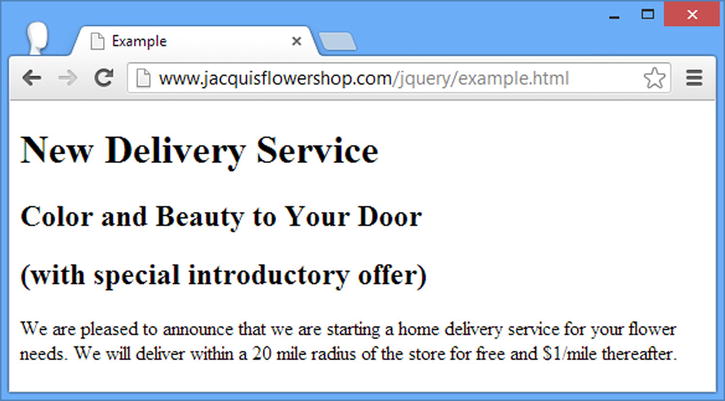
Figure 3-1. Displaying a simple document in the browser
There are a lot of CSS properties—too many to cover in detail in this book—but you can learn a lot about how CSS works by looking at just the small number of properties in Table 3-1.
Table 3-1. Some CSS Properties
| Property | Description |
|---|---|
| color | Sets the foreground color of the element (which typically sets the color of text) |
| background-color | Sets the background color of the element |
| font-size | Sets the size of the font used for text contained in the element |
| border | Sets the border for the element |
I haven’t defined values for these CSS properties but the browser has still managed to display the content and, as Figure 3-1 shows, each of the content elements has been presented in a different way. The browser still has to display the elements even if you haven’t provided values for the CSS properties, and so each element has a style convention—a default value that it uses for CSS properties when no other value has been set in the HTML document. The HTML specification defines style conventions for elements, but browsers are free to vary them, which is why so you will see variations in the style convention between, say, Google Chrome and Internet Explorer. Table 3-2 shows the default values that are used by Google Chrome for the properties I listed in Table 3-1.
Table 3-2. Some CSS Properties and Their Style Convention Values

You can see from the table that all three types of element have the same values for the color, background-color, and border properties and that it is only the font-size property that changes. Later in the chapter, I describe the units used for these property values—but for the moment, though, we are going to focus on setting values for properties without worrying about the units in which those values are expressed.
The most direct way to set values for CSS properties is to apply the style attribute to the element whose presentation we want to change. Listing 3-2 shows how this is done.
Listing 3-2. Using the style Attribute to Set a CSS Property on an Element
<!DOCTYPE html>
<html>
<head>
<title>Example</title>
</head>
<body>
<h1>New Delivery Service</h1>
<h2 style="background-color: grey; color: white">Color and Beauty to Your Door</h2>
<h2>(with special introductory offer)</h2>
<p>We are pleased to announce that we are starting a home delivery service for
your flower needs. We will deliver within a 20 mile radius of the store
for free and $1/mile thereafter.</p>
</body>
</html>
In Listing 3-2, I have used style declarations to specify values for two of the CSS properties. You can see the anatomy of the attribute value in Figure 3-2.

Figure 3-2. The anatomy of a style attribute value
Each style declaration specifies the name of a property you want to change and the value that you want to use, separated by a colon (:). You can put multiple declarations together using a semicolon character (;). In Figure 3-2, I set the value of the background-color to grey and the value of the color property to white. These values are specified in the style attribute of the h2 element and will affect only that element (other elements in the document remain unaffected, even if they are also h2 elements). You can see the effect that these new property values have in the presentation of the first h2 element in Figure 3-3.
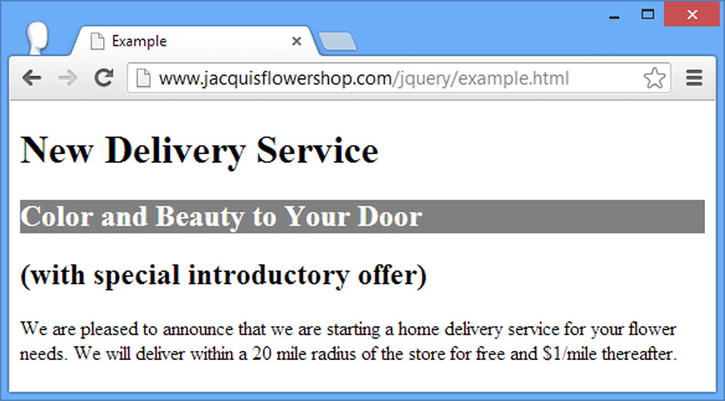
Figure 3-3. The effect of changing CSS values in the style attribute of the h2 element
Using the style attribute is easy but it applies to only a single element. You could use the style attribute for every element that you wanted to change, but it becomes difficult to manage and error-prone quickly, especially if you need to make revisions later. A more powerful technique is to use the style element (rather than the style attribute) to define an embedded style and direct the browser to apply it with a selector. Listing 3-3 shows an embedded style.
Listing 3-3. Defining an Embedded Style
<!DOCTYPE html>
<html>
<head>
<title>Example</title>
<style>
h2 { background-color: grey; color: white;}
</style>
</head>
<body>
<h1>New Delivery Service</h1>
<h2>Color and Beauty to Your Door</h2>
<h2>(with special introductory offer)</h2>
<p>We are pleased to announce that we are starting a home delivery service for
your flower needs. We will deliver within a 20 mile radius of the store
for free and $1/mile thereafter.</p>
</body>
</html>
We still use declarations in an embedded style, but they are enclosed in braces (the { and } characters) and are preceded by a selector. You can see the anatomy of an embedded style in Figure 3-4.

Figure 3-4. The anatomy of an embedded style
![]() Tip I have placed the style element within the head element, but I could have equally put it inside the body element. I prefer using the head element for styles because I like the idea of separating the content from the CSS that controls its appearance.
Tip I have placed the style element within the head element, but I could have equally put it inside the body element. I prefer using the head element for styles because I like the idea of separating the content from the CSS that controls its appearance.
CSS selectors are important in jQuery because they are the basis by which you select elements in order to perform operations on them. The selector I used in the example is h2, which means that the style declarations contained in the braces should be applied to every h2 element in the document. You can see the effect this has on the h2 elements in Figure 3-5.

Figure 3-5. The effect of an embedded style
You can use a style element to contain more than one embedded style. Listing 3-4 shows the flower shop document that you first saw in Chapter 2, which has a more complex set of styles.
Listing 3-4. A More Complex Set of Styles in an HTML Document
<!DOCTYPE html>
<html>
<head>
<title>Example</title>
<script src="jquery-2.0.2.js" type="text/javascript"></script>
<style>
h1 {
width: 700px; border: thick double black; margin-left: auto;
margin-right: auto; text-align: center; font-size: x-large; padding: .5em;
color: darkgreen; background-image: url("border.png");
background-size: contain; margin-top: 0;
}
.dtable {display: table;}
.drow {display: table-row;}
.dcell {display: table-cell; padding: 10px;}
.dcell > * {vertical-align: middle}
input {width: 2em; text-align: right; border: thin solid black; padding: 2px;}
label {width: 5em; padding-left: .5em;display: inline-block;}
#buttonDiv {text-align: center;}
#oblock {display: block; margin-left: auto; margin-right: auto; width: 700px;}
</style>
</head>
<body>
<h1>Jacqui's Flower Shop</h1>
<form method="post">
<div id="oblock">
<div class="dtable">
<div class="drow">
<div class="dcell">
<img src="aster.png"/><label for="aster">Aster:</label>
<input name="aster" value="0" required>
</div>
<div class="dcell">
<img src="daffodil.png"/><label for="daffodil">Daffodil:</label>
<input name="daffodil" value="0" required>
</div>
<div class="dcell">
<img src="rose.png"/><label for="rose">Rose:</label>
<input name="rose" value="0" required>
</div>
</div>
<div class="drow">
<div class="dcell">
<img src="peony.png"/><label for="peony">Peony:</label>
<input name="peony" value="0" required>
</div>
<div class="dcell">
<img src="primula.png"/><label for="primula">Primula:</label>
<input name="primula" value="0" required>
</div>
<div class="dcell">
<img src="snowdrop.png"/><label for="snowdrop">Snowdrop:</label>
<input name="snowdrop" value="0" required>
</div>
</div>
</div>
</div>
<div id="buttonDiv"><button type="submit">Place Order</button></div>
</form>
</body>
</html>
The style element in Listing 3-4 contains several embedded styles, and some of them, especially the one with the h1 selector, define values for many properties.
Defining an External Style Sheet
Rather than define the same set of styles in each of your HTML documents, you can create a separate style sheet. This is an independent file, with the conventional .css file extension, into which you put your styles. Listing 3-5 shows the contents of the file styles.css, into which I have placed the styles from the flower shop document.
Listing 3-5. The styles.css File
h1 {
min-width: 700px; border: thick double black; margin-left: auto;
margin-right: auto; text-align: center; font-size: x-large; padding: .5em;
color: darkgreen; background-image: url("border.png");
background-size: contain; margin-top: 0;
}
.dtable {display: table;}
.drow {display: table-row;}
.dcell {display: table-cell; padding: 10px;}
.dcell > * {vertical-align: middle}
input {width: 2em; text-align: right; border: thin solid black; padding: 2px;}
label {width: 5em; padding-left: .5em;display: inline-block;}
#buttonDiv {text-align: center;}
#oblock {display: block; margin-left: auto; margin-right: auto; min-width: 700px;}
You don’t need to use a style element in a style sheet. You just define the selectors and declarations directly. You then use the link element to bring the styles into your document, as shown in Listing 3-6.
Listing 3-6. Importing an External Style Sheet
<!DOCTYPE html>
<html>
<head>
<title>Example</title>
<script src="jquery-2.0.2.js" type="text/javascript"></script>
<link rel="stylesheet" type="text/css" href="styles.css" />
</head>
<body>
<h1>Jacqui's Flower Shop</h1>
<form method="post">
<div id="oblock">
<div class="dtable">
<div class="drow">
<div class="dcell">
<img src="aster.png"/><label for="aster">Aster:</label>
<input name="aster" value="0" required>
</div>
<div class="dcell">
<img src="daffodil.png"/><label for="daffodil">Daffodil:</label>
<input name="daffodil" value="0" required>
</div>
<div class="dcell">
<img src="rose.png"/><label for="rose">Rose:</label>
<input name="rose" value="0" required>
</div>
</div>
<div class="drow">
<div class="dcell">
<img src="peony.png"/><label for="peony">Peony:</label>
<input name="peony" value="0" required>
</div>
<div class="dcell">
<img src="primula.png"/><label for="primula">Primula:</label>
<input name="primula" value="0" required>
</div>
<div class="dcell">
<img src="snowdrop.png"/><label for="snowdrop">Snowdrop:</label>
<input name="snowdrop" value="0" required>
</div>
</div>
</div>
</div>
<div id="buttonDiv"><button type="submit">Place Order</button></div>
</form>
</body>
</html>
You can link to as many style sheets as you need, referencing one per link element. The order in which you import style sheets is important if you define two styles with the same selector. The one that is loaded last will be the one that is applied.
Understanding CSS Selectors
Notice that there are different kinds of selectors in the flower shop style sheet: some are element names (such as h1 and input), others start with a period (such as .dtable and .row), and yet others start with a pound (#butonDiv and #oblock). If you are particularly observant, you will notice that one of the selectors has multiple components: .dcell > *. Each CSS selector selects elements in the document, and the different kinds of selector tell the browser to look for elements in different ways. In this section, I describe the different kinds of selectors that are defined by CSS, starting with the core selectors , which Table 3-3 summarizes.
Table 3-3. The Core Selectors
| Selector | Description |
|---|---|
| * | Selects all elements |
| <type> | Selects elements of the specified type |
| .<class> | Selects elements of the specific class (irrespective of element type) |
| <type>.<class> | Selects elements of the specified type that are members of the specified class |
| #<id> | Selects elements with the specified value for the id attribute |
These selectors are the most widely used (they cover most of the styles I defined in the example document, for instance).
Selecting by Attribute
Although the basic selectors work on the id and class attributes (which I described in Chapter 2), there are also selectors available that let you work with any attribute. Table 3-4 describes them.
Table 3-4. The Attribute Selectors
| Selector | Description |
|---|---|
| [attr] | Selects elements that define the attribute attr, irrespective of the value assigned to the attribute |
| [attr="val"] | Selects elements that define attr and whose value for this attribute is val |
| [attr^="val"] | Selects elements that define attr and whose value for this attribute starts with the string val |
| [attr$="val"] | Selects elements that define attr and whose value for this attribute ends with the string val |
| [attr*="val"] | Selects elements that define attr and whose value for this attribute contains the string val |
| [attr∼="val"] | Selects elements that define attr and whose value for this attribute contains multiple values, one of which is val |
| [attr|="val"] | Selects elements that define attr and whose value is a hyphen-separated list of values, the first of which is val |
Listing 3-7 shows a simple document with an embedded style whose selector is based on attributes.
Listing 3-7. Using the Attribute Selectors
<!DOCTYPE html>
<html>
<head>
<title>Example</title>
<style>
[lang] { background-color: grey; color: white;}
[lang="es"] {font-size: 14px;}
</style>
</head>
<body>
<h1 lang="en">New Delivery Service</h1>
<h2 lang="en">Color and Beauty to Your Door</h2>
<h2 lang="es">(Color y belleza a tu puerta)</h2>
<p>We are pleased to announce that we are starting a home delivery service for
your flower needs. We will deliver within a 20 mile radius of the store
for free and $1/mile thereafter.</p>
</body>
</html>
The first selector matches any element that has the lang attribute, and the second selector matches any element whose lang attribute value is es. You can see the effect of these styles in Figure 3-6.

Figure 3-6. Applying styles using attribute selectors
![]() Note There is something important to note in this figure. Look at how the h2 element has been affected by both of the embedded styles. The first style is applied to all elements with a lang attribute. The second style is applied to all elements that have a lang attribute whose value is es. The second h2 element in the document meets both of those criteria, and so the values for the background-color, color, and font-size properties are all changed. I’ll explain more about how this works in the section “Understanding Style Cascading.”
Note There is something important to note in this figure. Look at how the h2 element has been affected by both of the embedded styles. The first style is applied to all elements with a lang attribute. The second style is applied to all elements that have a lang attribute whose value is es. The second h2 element in the document meets both of those criteria, and so the values for the background-color, color, and font-size properties are all changed. I’ll explain more about how this works in the section “Understanding Style Cascading.”
Selecting by Relationship
In Chapter 2, I explained that elements (and the object that represents them in the DOM) have a hierarchy that gives rise to different kinds of relationship. There are CSS selectors that allow you to select elements based on those relationships, as described in Table 3-5.
Table 3-5. The Relationship Selectors
| Selector | Description |
|---|---|
| <selector> <selector> | Selects elements that match the second selector and that are descendants of the elements matched by the first selector |
| <selector> > <selector> | Selects elements that match the second selector and that are children of the elements matched by the first selector |
| <selector> + <selector> | Selects elements that match the second selector and are the next sibling to an element that matches the first selector |
| <selector> ∼ <selector> | Selects elements that match the second selector and that are siblings to (and that appear after) an element that matches the first selector |
I used one of these selectors in the flower shop example document, as follows:
.dcell > * {vertical-align: middle}
This selector matches all of the elements that are children of elements that belong to the dcell class, and the declaration sets the vertical-align property to the value middle. Listing 3-8 shows some of the other relationship selectors being used.
Listing 3-8. Using the Relationship Selectors
<!DOCTYPE html>
<html>
<head>
<title>Example</title>
<style>
h1 ∼ [lang] { background-color: grey; color: white;}
h1 + [lang] {font-size: 12px;}
</style>
</head>
<body>
<h1 lang="en">New Delivery Service</h1>
<h2 lang="en">Color and Beauty to Your Door</h2>
<h2 lang="es">(Color y belleza a tu puerta)</h2>
<p>We are pleased to announce that we are starting a home delivery service for
your flower needs. We will deliver within a 20 mile radius of the store
for free and $1/mile thereafter.</p>
</body>
</html>
I have used both of the sibling selectors in Listing 3-8. The first selector, the one that uses the tilde (∼) character, matches any element that has a lang attribute and that is defined after and is a sibling to an h1 element. In the example document, this means that both the h2 elements are selected (since they have the attribute and are siblings to and are defined after the h1 element). The second selector, the one that uses the plus character, is similar but matches only the immediate sibling of an h1 element. This means that only the first of the h2 element is selected. You can see the effect in Figure 3-7.
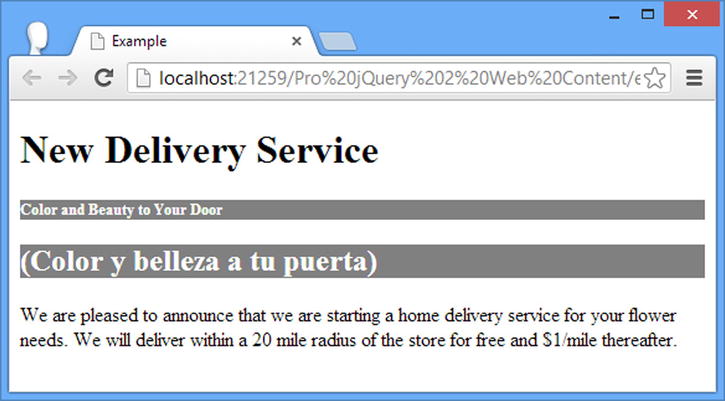
Figure 3-7. Using the sibling relationship selectors
Selecting Using the Pseudo-element and Pseudo-class Selectors
CSS supports a set of pseudo-element and pseudo-class selectors. These provide convenient functionality that doesn’t correspond directly to elements or class membership in the document. Table 3-6 describes these selectors.
Table 3-6. The Pseudo-selectors
| Selector | Description |
|---|---|
| :active | Selects elements that are presently activated by the user; this usually means those elements that are under the pointer when the mouse button is pressed |
| :checked | Selects elements that are in a checked state |
| :default | Selects default elements |
| :disabled | Selects elements that are in their disabled state |
| :empty | Selects elements that contain no child elements |
| :enabled | Selects elements that are in their enabled state |
| :first-child | Selects elements that are the first children of their parent |
| :first-letter | Selects the first letter of a block of text |
| :first-line | Selects the first line of a block of text |
| :focus | Selects the element that has the focus |
| :hover | Selects elements that occupy the position on-screen under the mouse pointer |
| :in-range:out-of-range | Selects constrained input elements that are within or outside the specified range |
| :lang(<language>) | Selects elements based on the value of the lang attribute |
| :last-child | Selects elements that are the last children of their parent |
| :link | Selects link elements |
| :nth-child(n) | Selects elements that are the nth child of their parent |
| :nth-last-child(n) | Selects elements that are the nth from last child of their parent |
| :nth-last-of-type(n) | Selects elements that are the nth from last child of their type defined by their parent |
| :nth-of-type(n) | Selects elements that are the nth child of their type defined by their parent |
| :only-child | Selects elements that are the sole element defined by their parent |
| :only-of-type | Selects elements that are the sole element of their type defined by their parent |
| :required:optional | Selects input elements based on the presence of the required attribute |
| :root | Selects the root element in the document |
| :target | Selects the element referred to by the URL fragment identifier |
| :valid:invalid | Selects input elements that are valid or invalid based on input validation in forms |
| :visited | Selects link elements that the user has visited |
Listing 3-9 shows the use of some pseudo-selectors.
Listing 3-9. Using Pseudo-selectors
<!DOCTYPE html>
<html>
<head>
<title>Example</title>
<style>
:nth-of-type(2) { background-color: grey; color: white;}
p:first-letter {font-size: 40px;}
</style>
</head>
<body>
<h1 lang="en">New Delivery Service</h1>
<h2 lang="en">Color and Beauty to Your Door</h2>
<h2 lang="es">(Color y belleza a tu puerta)</h2>
<p>We are pleased to announce that we are starting a home delivery service for
your flower needs. We will deliver within a 20 mile radius of the store
for free and $1/mile thereafter.</p>
</body>
</html>
You can use the pseudo-selectors on their own or as a modifier to another selector. I have shown both approaches in Listing 3-9. The first selector matches any element that is the second element of its type defined by its parent. The second selector matches the first letter of any p elements. You can see the application of these styles in Figure 3-8.
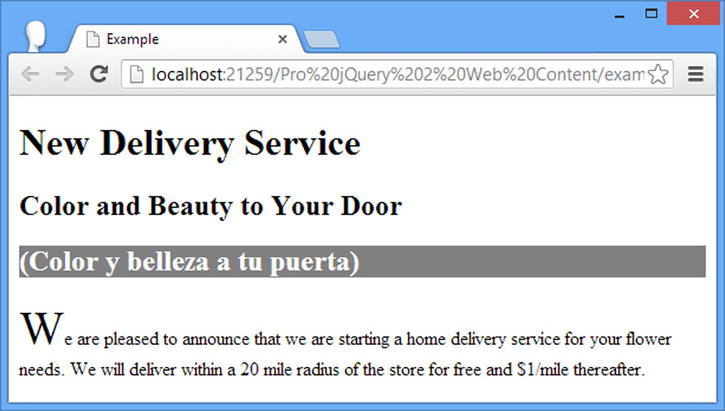
Figure 3-8. Using pseudo-selectors to apply styles
Unions and the Negation Selectors
You can get additional flexibility by arranging selectors together. Specifically, you can create unions by combining selections and inverting a selection through negation. Both of these approaches are described in Table 3-7.
Table 3-7. Flexibly Arranging Selectors
| Selector | Description |
|---|---|
| <selector>, <selector> | Selects the union of elements matched by the first selector and the elements matched by the second selector |
| :not(<selector>) | Selects the elements that are not matched by the specified selector |
Listing 3-10 shows how you can create unions and negations.
Listing 3-10. Using Selector Unions and Negation
<!DOCTYPE html>
<html>
<head>
<title>Example</title>
<style>
h1, h2 { background-color: grey; color: white;}
:not(html):not(body):not(:first-child) {border: medium double black;}
</style>
</head>
<body>
<h1 lang="en">New Delivery Service</h1>
<h2 lang="en">Color and Beauty to Your Door</h2>
<p>We are pleased to announce that we are starting a home delivery service for
your flower needs. We will deliver within a 20 mile radius of the store
for free and $1/mile thereafter.</p>
</body>
</html>
The first selector in Listing 3-10 is the union of the h1 and h2 selectors. As you might imagine, this matches all h1 and h2 elements in the document. The second selector is a little more esoteric. I wanted to demonstrate how you could use pseudo-selectors as modifiers to other pseudo-selectors, including negation.
...
:not(html):not(body):not(:first-child) {border: medium double black;}
...
This selector matches any element that is not an html element, that is not a body element, and that is not the first child of its parent. You can see how the styles in this example are applied in Figure 3-9.
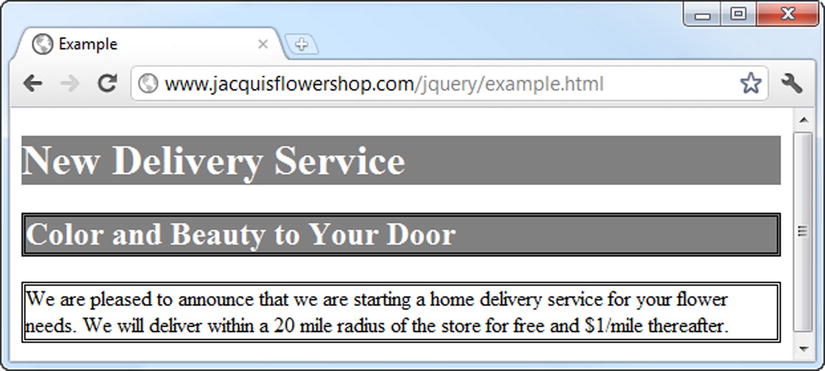
Figure 3-9. Creating selector unions and negations
Understanding Style Cascading
The key to understanding style sheets is to understand how they cascade and inherit. There can be multiple sources for CSS properties in an HTML document and cascading and inheritance are the means by which the browser determines which values should be used to display an element. You have seen three different ways you can define styles (inline, embedded, and from an external style sheet), but there are two other sources of styles: browser styles and user styles.
The browser styles (more properly known as the user agent styles) are the style conventions that a browser applies to an element if no other style has been specified. You saw an example of style conventions being used at the start of this chapter.
In addition, most browsers allow users to define their own style sheets. The styles that these style sheets contain are called user styles . This isn’t a widely used feature, but those users who do define their own style sheets often attach great importance to being able to do so, not least because it provides a way of making pages more accessible.
Each browser has its own mechanism for user styles. Google Chrome on Windows, for example, creates a file in the user’s profile directory called User StyleSheetsCustom.css. Any styles added to this file are applied to any site that the user visits, subject to the cascading rules that I describe in the following section.
Understanding How Styles Cascade
Now that you have seen all of the sources of styles that a browser has to consider, you can look at the order in which the browser will look for a property value when it comes to display an element.
- Inline styles (styles that are defined using the style attribute on an element)
- Embedded styles (styles that are defined in a style element)
- External styles (styles that are imported using the link element)
- User styles (styles that have been defined by the user)
- Browser styles (the style conventions applied by the browser)
Imagine that the browser needs to display a p element. It needs to know what color should be used to display the text and that means it needs to find a value for the CSS color property. First, it will check to see whether the element it is trying to display has an inline style that defines a value for color, as follows:
...
<pstyle="color: red">We are pleased to announce that we are starting a home delivery
service for your flower needs. We will deliver within a 20 mile radius of the store
for free and $1/mile thereafter.</p>
...
If there is no inline style, then the browser will look for a style element that contains a style that applies to the element, as follows:
...
<style>
p {color: red};
</style>
...
If there is no such style element, the browser looks at the style sheets that have been loaded via the link element, and so on until the browser finds a value for the color property, and that means using the value defined in the default browser styles if no other value is available.
![]() Tip The first three sources of properties (inline styles, embedded styles, and style sheets) are collectively referred to as the author styles. The styles defined in the user style sheet are known as the user styles, and the styles defined by the browser are known as the browser styles.
Tip The first three sources of properties (inline styles, embedded styles, and style sheets) are collectively referred to as the author styles. The styles defined in the user style sheet are known as the user styles, and the styles defined by the browser are known as the browser styles.
Tweaking the Order with Important Styles
You can override the normal cascade order by marking your property values as important , as shown in Listing 3-11.
Listing 3-11. Marking Style Properties as Important
<!DOCTYPE html>
<html>
<head>
<title>Example</title>
<style>
p {color: black !important; }
</style>
</head>
<body>
<h1 lang="en">New Delivery Service</h1>
<h2 lang="en">Color and Beauty to Your Door</h2>
<pstyle="color: red">We are pleased to announce that we are starting a home delivery
service for your flower needs. We will deliver within a 20 mile radius of the store
for free and $1/mile thereafter.</p>
</body>
</html>
You mark individual values as important by appending !important to the declaration. The browser gives preference to important styles, irrespective of where they are defined. You can see the effect of property importance in Figure 3-10, where the embedded value for the color property overrides the inline value (this may be a little hard to make out on the printed page, but all of the text is black).
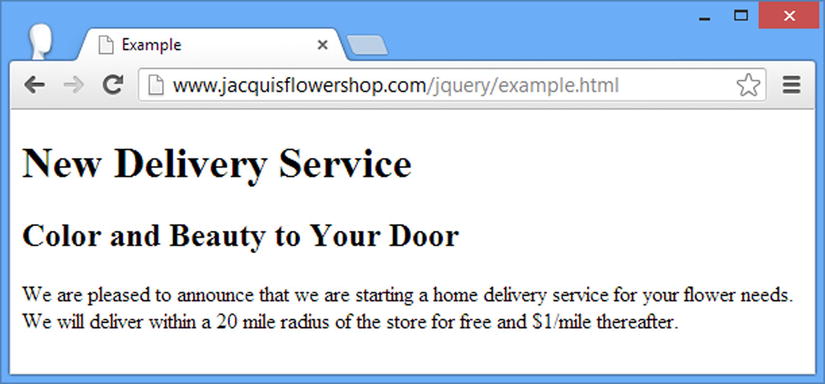
Figure 3-10. Important property values overriding inline property values
![]() Tip The only thing that will take precedence over an important value that you define is an important value defined in the user style sheet. For regular values, the author styles are used before the user styles, but this is reversed when dealing with important values.
Tip The only thing that will take precedence over an important value that you define is an important value defined in the user style sheet. For regular values, the author styles are used before the user styles, but this is reversed when dealing with important values.
Tie-Breaking with Specificity and Order Assessments
We enter a tie-break situation if there are two styles that can applied to an element defined at the same cascade level and they both contain values for the CSS property that the browser is looking for. To decide which value to use, the browser assesses the specificity of each style and selects the one that is most specific. The browser determines the specificity of a style by counting three different characteristics.
- The number of id values in the style’s selector
- The number of other attributes and pseudo-classes in the selector
- The number of element names and pseudo-elements in the selector
The browser combines the values from each assessment and applies the property value from the style that is most specific. You can see a simple example of specificity in Listing 3-12.
Listing 3-12. Specificity in Styles
<!DOCTYPE html>
<html>
<head>
<title>Example</title>
<style>
p {background-color: grey; color: white;}
p.details {color:red;}
</style>
</head>
<body>
<h1 lang="en">New Delivery Service</h1>
<h2 lang="en">Color and Beauty to Your Door</h2>
<p class="details">We are pleased to announce that we are starting a home delivery
service for your flower needs. We will deliver within a 20 mile radius of the store
for free and $1/mile thereafter.</p>
</body>
</html>
When assessing specificity, you create a number in the form a-b-c, where each letter is the total from one of the three characteristics that are counted. This is not a three-digit number. A style is more specific if its a value is the greatest. Only if the a values are equal does the browser compare b values. The style with the greater b value is more specific in this case. Only if both a and b values are the same does the browser consider the c value. This means that a specificity score of 1-0-0 is more specific than 0-5-5.
In this case, the selector p.details includes a class attribute, which means that the specificity of the style is 0-1-1 (0 id values + 1 other attributes + 1 element names). The other selector has a specificity of 0-0-1 (it contains no id values or other attributes and one element name).
When rendering a p element, the browser will look for a value for the color property. If the p element is a member of the details class, then the style with the p.details selector will be the most specific, and the value of red will be used. For all other p elements, the value white will be used. You can see how the browser selects and applies values for this example in Figure 3-11.
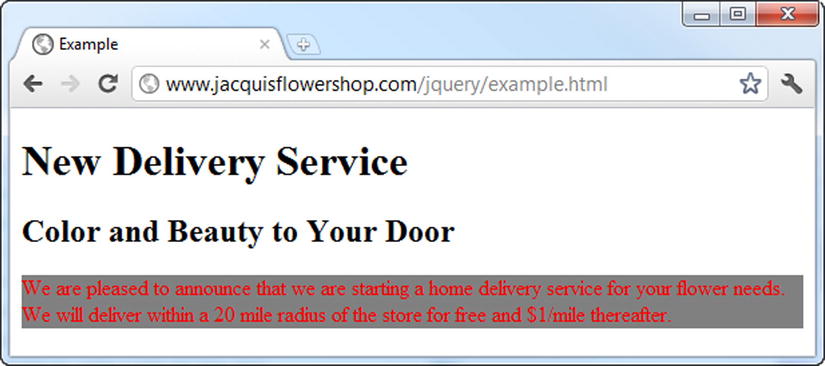
Figure 3-11. Applying values from styles based on specificity
When there are values defined in styles with the same specificity, then the browser selects the value it uses based on the order in which the values are defined. The one that is defined last is the one that will be used. Listing 3-13 shows a document that contains two equally specific styles.
Listing 3-13. Styles That Are Equally Specific
<!DOCTYPE html>
<html>
<head>
<title>Example</title>
<style>
p.details {color:red;}
p.information {color: blue;}
</style>
</head>
<body>
<h1 lang="en">New Delivery Service</h1>
<h2 lang="en">Color and Beauty to Your Door</h2>
<p class="details information">We are pleased to announce that we are starting a home
Delivery service for your flower needs. We will deliver within a 20 mile radius of
the store for free and $1/mile thereafter.</p>
</body>
</html>
Both styles defined in the style element have the same specificity score, and both apply to the p element. When the browser displays the p element in the page, it will select the blue property for the color property since that is the value defined in the latter style. You can see this in Figure 3-12.
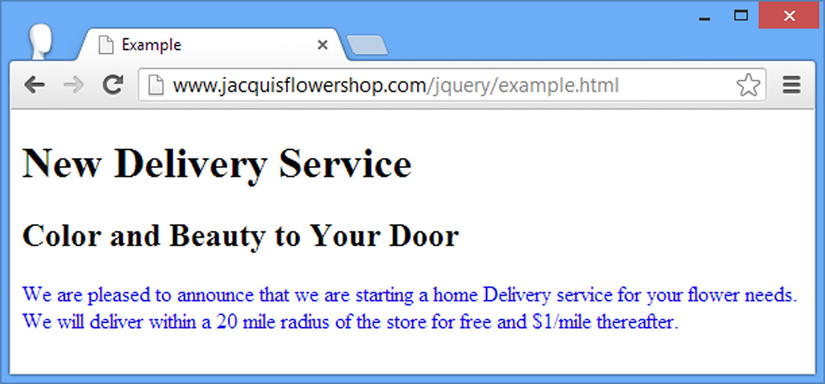
Figure 3-12. Selecting property values based on the order in which styles are defined
![]() Tip These specificity rules are applied only to styles that are defined at the same cascade level. This means that a property defined in a style attribute will always take precedence over a style defined in a style element, for example.
Tip These specificity rules are applied only to styles that are defined at the same cascade level. This means that a property defined in a style attribute will always take precedence over a style defined in a style element, for example.
Understanding CSS Units
Earlier in the chapter, I showed you the values that the browser uses by default for some CSS properties. These are the style conventions for some of the elements in the examples, and I have duplicated this information in Table 3-8.
Table 3-8. Some CSS Properties and Their Values

CSS defines a broad range of different unit types, and in the sections that follow I’ll show you some of the more commonly used ones, including those that I use in this book.
Working with CSS Colors
Colors are used by a lot of the CSS properties, including the color and background-color properties I have been using in this chapter. The simplest way to specify a color is to use a predefined color name or to use a decimal or hexadecimal value for each of the red, green, and blue components. Decimal values are separated by a comma, and hex values are usually prefixed with #, such as #ffffff, which represents white. You can see some of the predefined names for colors and their decimal and hex equivalents in Table 3-9.
Table 3-9. Selected CSS Colors
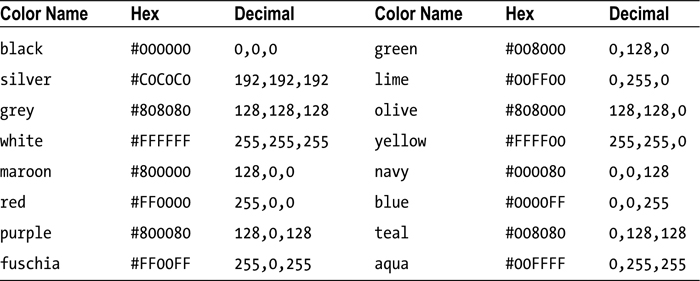
These are known as the basic color names. CSS also defines the extended colors. There are too many to detail here, but you can find a complete list at www.w3.org/TR/css3-color. In addition to the basic colors, a lot of slight variations are available. As an example, Table 3-10 shows the extended set of grey shades that can be used.
Table 3-10. Selected CSS Colors
| Color Name | Hex | Decimal |
|---|---|---|
| darkgrey | #a9a9a9 | 169,169,169 |
| darkslategrey | #2f4f4f | 47,79,79 |
| dimgrey | #696969 | 105,105,105 |
| grey | #808080 | 128,128,128 |
| lightgrey | #d3d3d3 | 211,211,211 |
| lightslategrey | #778899 | 119,136,153 |
| slategrey | #708090 | 112,128,144 |
Specifying More Complex Colors
Color names and simple hex values aren’t the only way you can specify colors. A number of functions allow you to select a color. Table 3-11 describes each of the functions available.
Table 3-11. CSS Color Functions
| Function | Description | Example |
|---|---|---|
| rgb(r, g, b) | Specifies a color using the RGB (red, green, blue) model. | color: rgb(112, 128, 144) |
| rgba(r, g, b, a) | Specifies a color using the RGB model, with the addition of an alpha value to specify opacity. (A value of 0 is fully transparent; a value of 1 is fully opaque.) | color: rgba(112, 128, 144, 0.4) |
| hsl(h, s, l) | Specifies a color using the hue, saturation, and lightness (HSL) model. | color: hsl(120, 100%, 22%) |
| hsla(h, s, l, a) | Like HSL, but with the addition of an alpha value to specify opacity. | color: hsla(120, 100%, 22%, 0.4) |
You can use the rgba function to specify a color with transparency, but if you want a completely transparent element, then you can use the special color value transparent.
Understanding CSS Lengths
Many CSS properties require you to specify a length, such as the font-size property, which is used to specify the size of font used to render an element’s content. When you specify a length, you concatenate the number of units and the unit identifier together, without any spaces or other characters between them. For example, a value of 20pt for the font-size property means 20 of the units represented by the pt identifier (which are points, explained in a moment). CSS defines two kinds of length unit: those that are absolute and those that are relative to another property. I explain both in the sections that follow.
Absolute units are real-world measurements. CSS supports five types of absolute unit, which Table 3-12 describes.
Table 3-12. CSS Absolute Units of Measurement
| Unit Identifier | Description |
|---|---|
| in | Inches |
| cm | Centimeters |
| mm | Millimeters |
| pt | Points (1 point is 1/72 of an inch) |
| pc | Picas (1 pica is 12 points) |
You can mix and match units in a style and mix absolute and relative units. Absolute units can be useful if you have some prior knowledge of how the content will be rendered, such as when designing for print. I don’t use the absolute units that much in my CSS projects—I find the relative units more flexible and easier to maintain and I rarely create content that has to correspond to real-world measurements.
![]() Tip You might be wondering where pixels are in the table of absolute units. In fact, CSS tries to make pixels a relative unit of measurement, although, sadly, the specification makes a botched attempt at doing so. You can learn more in the section “Working with Pixels.”
Tip You might be wondering where pixels are in the table of absolute units. In fact, CSS tries to make pixels a relative unit of measurement, although, sadly, the specification makes a botched attempt at doing so. You can learn more in the section “Working with Pixels.”
Relative lengths are more complex to specify and implement than absolute units and require tight and concise language to define their meaning unambiguously. A relative unit is measured in terms of some other unit. Unfortunately, the language in the CSS specifications isn’t precise enough (a problem that has plagued CSS for years). This means CSS defines a wide range of interesting and useful relative measurements, but you can’t use some of them because they don’t have widespread or consistent browser support. Table 3-13 shows the relative units that CSS defines and that can be relied on in mainstream browsers.
Table 3-13. CSS Relative Units of Measurement
| Unit Identifier | Description |
|---|---|
| em | Relative to the font size of the element |
| ex | Relative to x-height of the element’s font |
| rem | Relative to the font size of the root element |
| px | A number of CSS pixels (assumed to be on a 96 dpi display) |
| % | A percentage of the value of another property |
When you use a relative unit, you are effectively specifying a multiple of another measurement. Listing 3-14 gives an example that sets a property relative to the font-size.
Listing 3-14. Using a Relative Unit
<!DOCTYPE html>
<html>
<head>
<title>Example</title>
<style>
p.details {
font-size: 15pt;
height: 3em;
border: thin solid black;
}
</style>
</head>
<body>
<h1 lang="en">New Delivery Service</h1>
<h2 lang="en">Color and Beauty to Your Door</h2>
<p class="details information">We are pleased to announce that we are starting a home
delivery service for your flower needs. We will deliver within a 20 mile radius of
the store for free and $1/mile thereafter.</p>
</body>
</html>
In this example, I have specified the value of the height property (which sets the height of an element) to be 3em, which means that p elements should be rendered so that the height of the element on the screen is three times the font-size. You can see how the browser displays these elements in Figure 3-13. I added a border (using the border property) so you can see the size of the element more readily.
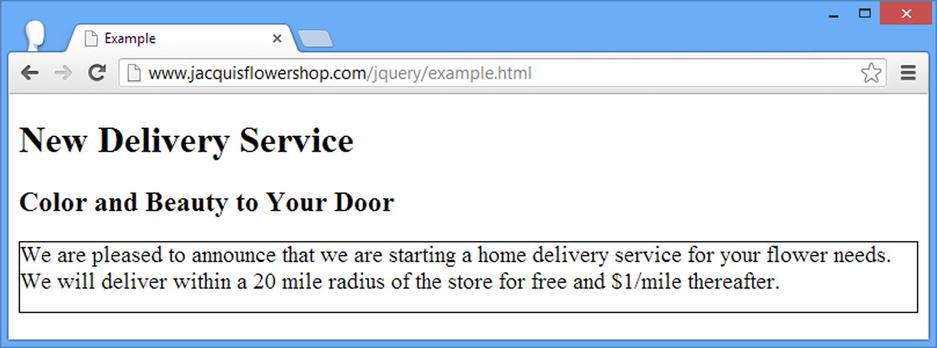
Figure 3-13. The effect of using relative measurements
Pixels in CSS are not what you might expect. The usual meaning of the term pixel refers to the smallest addressable unit on a display: one picture element. CSS tries to do something different and defines a pixel as follows:
The reference pixel is the visual angle of one pixel on a device with a pixel density of 96 dpi and a distance from the reader of an arm’s length.
This is the kind of vague definition that plagues CSS. I don’t want to rant, but specifications that are dependent on the length of a user’s arm are problematic. Fortunately, the mainstream browsers ignore the difference between pixels as defined by CSS and pixels in the display and treat 1 pixel to be 1/96th of an inch. (This is the standard Windows pixel density; browsers on platforms with displays that have a different pixel density usually implement a translation so that 1 pixel is still roughly 1/96th of an inch.)
![]() Tip Although it isn’t much use, you can read the full definition of a CSS pixel at www.w3.org/TR/CSS21/syndata.html#length-units.
Tip Although it isn’t much use, you can read the full definition of a CSS pixel at www.w3.org/TR/CSS21/syndata.html#length-units.
The net effect of this is that although CSS pixels are intended to be a relative unit of measure, they are treated as an absolute unit by browsers. Listing 3-15 demonstrates specifying pixels in a CSS style.
Listing 3-15. Using Pixel Units in a Style
<!DOCTYPE html>
<html>
<head>
<title>Example</title>
<style>
p.details {
font-size: 20px;
width: 400px;
border: thin solid black;
}
</style>
</head>
<body>
<h1 lang="en">New Delivery Service</h1>
<h2 lang="en">Color and Beauty to Your Door</h2>
<p class="details information">We are pleased to announce that we are starting a home
delivery service for your flower needs. We will deliver within a 20 mile radius of
the store for free and $1/mile thereafter.</p>
</body>
</html>
In Listing 3-15, I have expressed both the font-size and width properties in pixels (the width property is the complement to the height property and sets the width of an element). You can see how the browser applies this style in Figure 3-14.
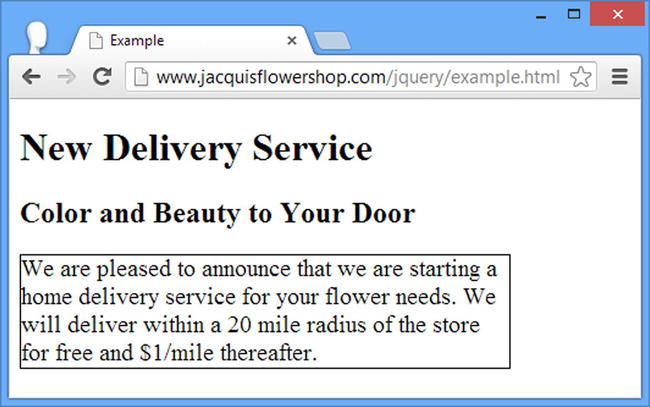
Figure 3-14. Specifying units in pixels
![]() Tip Although I often use pixels as units in CSS, it tends to be a matter of habit. I find em units more flexible. This is because I have to alter the size of the font only when I need to make a change, and the rest of the style works seamlessly. It is important to remember that while CSS pixels were intended to be relative units, they are absolute units in practice and can be inflexible as a consequence.
Tip Although I often use pixels as units in CSS, it tends to be a matter of habit. I find em units more flexible. This is because I have to alter the size of the font only when I need to make a change, and the rest of the style works seamlessly. It is important to remember that while CSS pixels were intended to be relative units, they are absolute units in practice and can be inflexible as a consequence.
Working with Percentages
You can express a unit of measurement as a percentage of another property value. You do this using the % (percent) unit, as demonstrated in Listing 3-16.
Listing 3-16. Expressing Units as a Percentage of Another Property Value
<!DOCTYPE html>
<html>
<head>
<title>Example</title>
<style>
p.details {
font-size: 200%;
width: 50%;
border: thin solid black;
}
</style>
</head>
<body>
<h1 lang="en">New Delivery Service</h1>
<h2 lang="en">Color and Beauty to Your Door</h2>
<p class="details information">We are pleased to announce that we are starting a home
delivery service for your flower needs. We will deliver within a 20 mile radius of
the store for free and $1/mile thereafter.</p>
</body>
</html>
There are two complications in using percentages as units. The first is that not all properties can be expressed in this way, and the second is that each property that can be expressed as a percentage individually defines which other property the percentage refers to. For example, the font-size property uses the inherited font-size value from the parent element, and the width property uses the width of the containing element.
Using Shorthand Properties and Custom Values
Not all properties are set using units and colors. Some have special values that are unique to the kind of behavior they control. A good example of this is the border property, which I used in some of the listings to draw a border around elements. You set the border property using three values, as follows:
...
border: thin solid black;
...
The first value is the thickness of the border, the second value is the style of the border, and the final value is the color of the border. Table 3-14 shows the values you can use to specify the thickness of the border.
Table 3-14. Values for the Border Width
| Value | Description |
|---|---|
| <length> | A length expressed in CSS measurement units such as em, px, or cm |
| <perc>% | Percent of the width of the area around which the border will be drawn |
| thinmediumthick | Preset widths, the meanings of which are defined by each browser, but which are progressively thicker |
Table 3-15 shows the values you can use for the style of the border.
Table 3-15. Values for the Border Style
| Value | Description |
|---|---|
| none | No border will be drawn |
| dashed | The border will be a series of rectangular dashes |
| dotted | The border will be a series of circular dots |
| double | The border will be two parallel lines with a gap between them |
| groove | The border will appear to have been sunken into the page |
| inset | The border will be such that the content looks sunken into the page |
| outset | The border will be such that the content looks raised from the page |
| ridge | The border will appear raised from the page |
| solid | The border will be a single, unbroken line |
By combining values from these tables with a color, you can achieve a wide range of border effects. You can see the range of styles displayed in the browser in Figure 3-15.
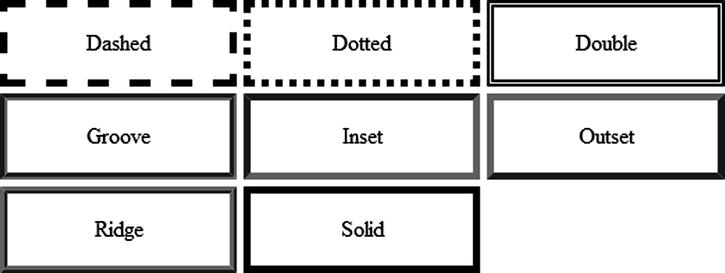
Figure 3-15. The border styles
The border property is also a good example of a shorthand property . These properties allow you to set the value of several related properties in a single declaration. This means a border such as the one shown earlier is equivalent to the following 12 declarations:
border-top-color: black;
border-top-style: solid;
border-top-width: thin;
border-bottom-color: black;
border-bottom-style: solid;
border-bottom-width: thin;
border-left-color: black;
border-left-style: solid;
border-left-width: thin;
border-right-color: black;
border-right-style: solid;
border-right-width: thin;
CSS allows you to dig into the details and set individual properties for fine control or to use the shorthand properties when all of the related values are the same.
Summary
In this chapter, I gave you a brief overview of CSS, showing you how to set properties using the style attribute, how to use the style element (including the wide range of selectors that are available), and how the browsers use cascading and specificity to work out which property values should be applied to elements when they are displayed. I finished with a tour of the CSS units, custom values, and shorthand properties. You can express values for properties in a number of different ways, which adds flexibility (and a little confusion) to CSS styles.
In Chapter 4, I introduce the basics of JavaScript, which is the means by which jQuery functionality is defined and applied to HTML content.
